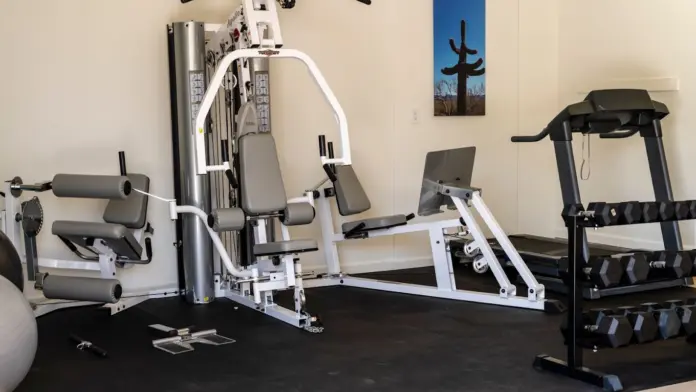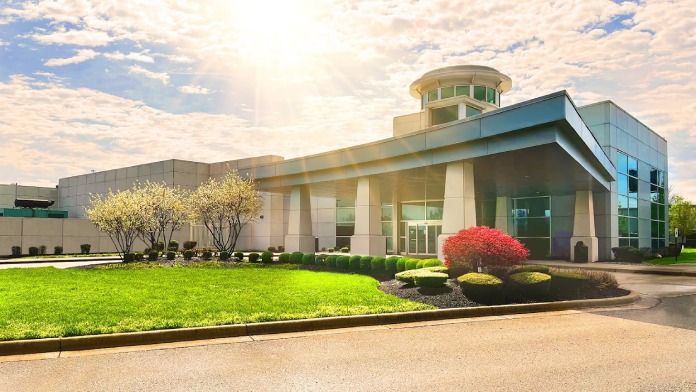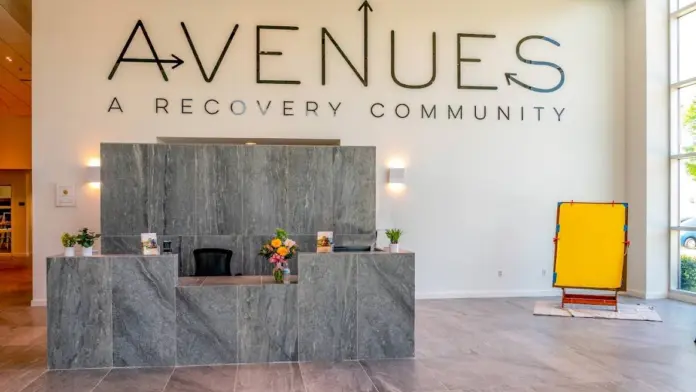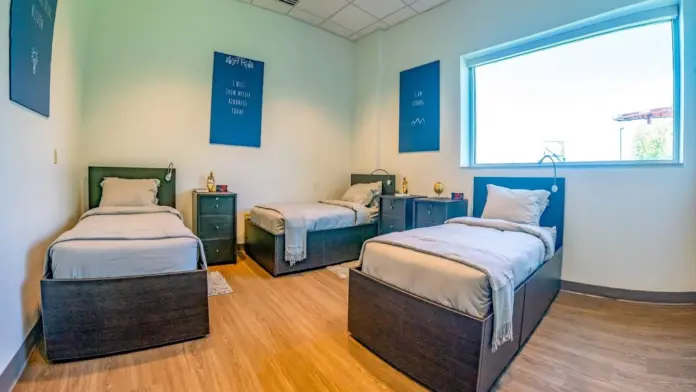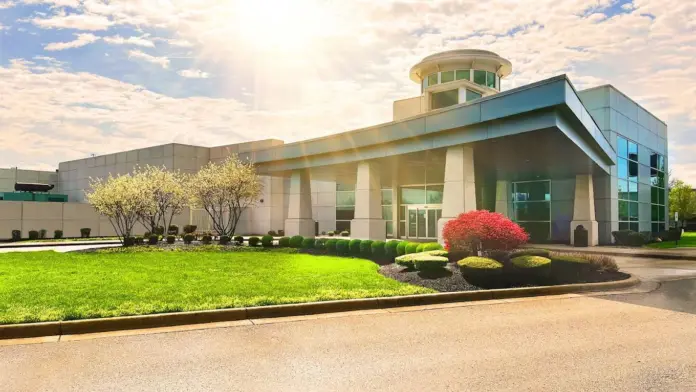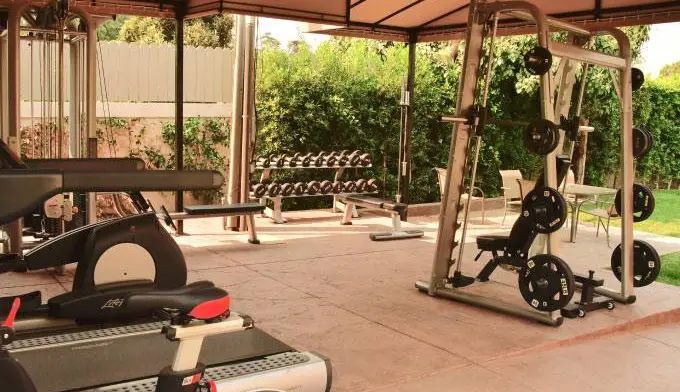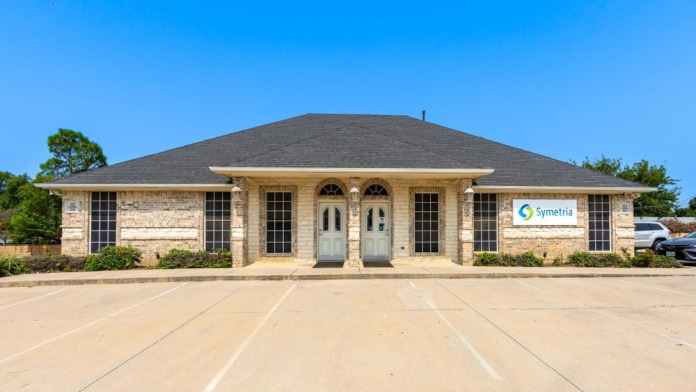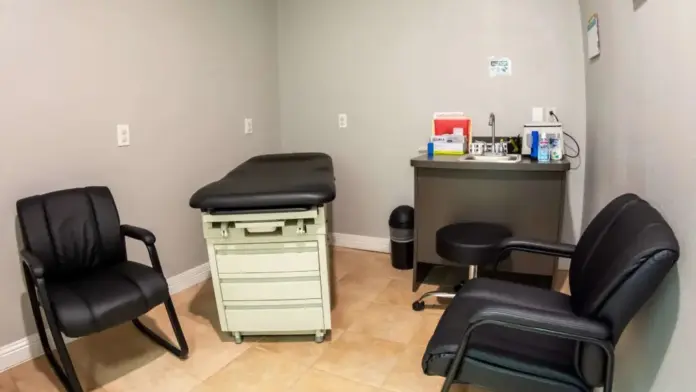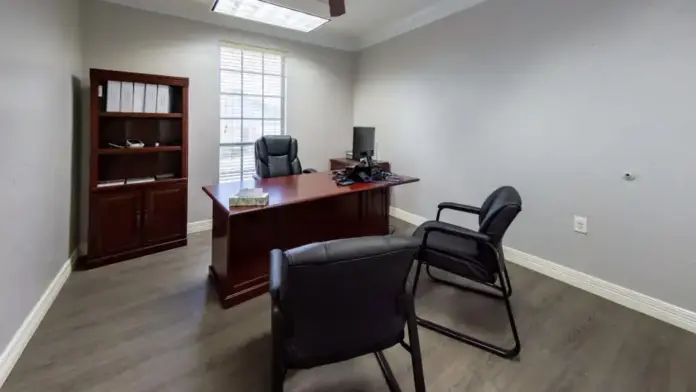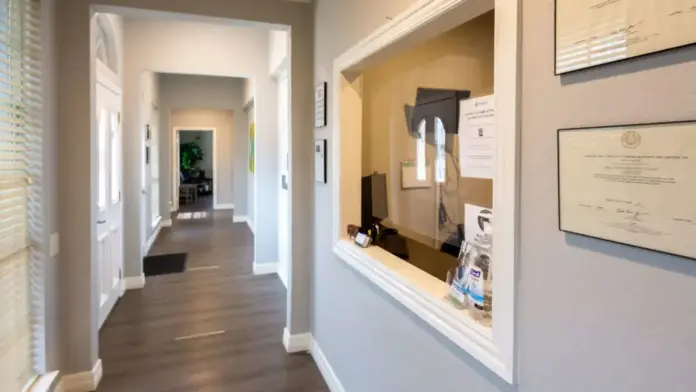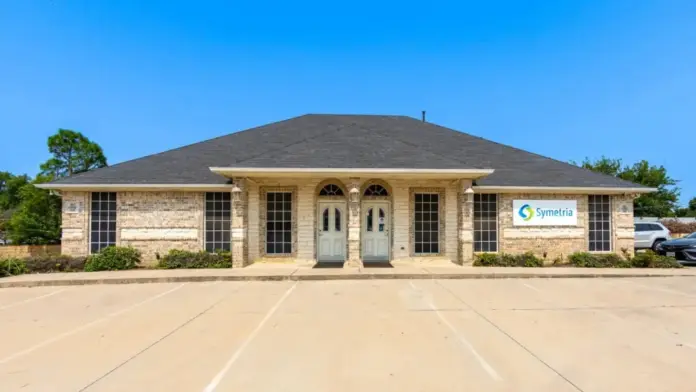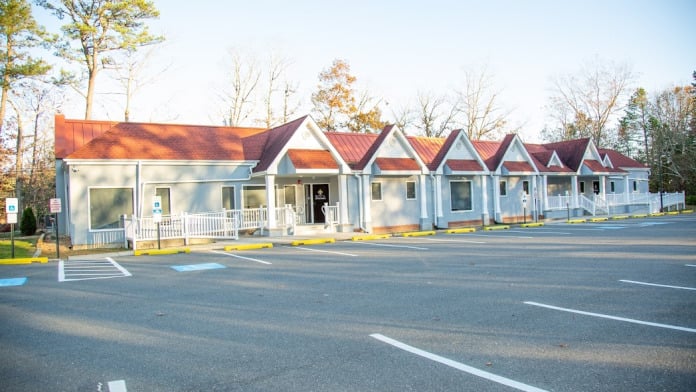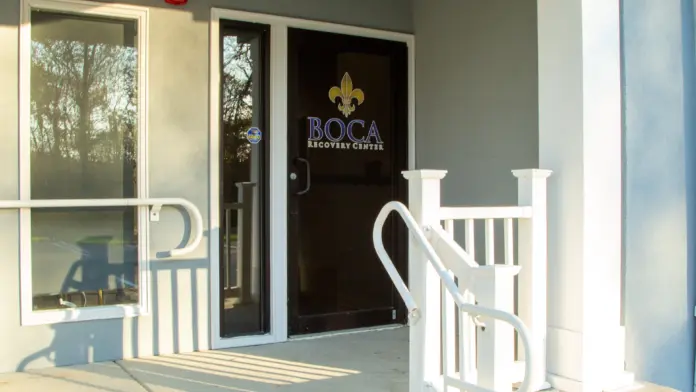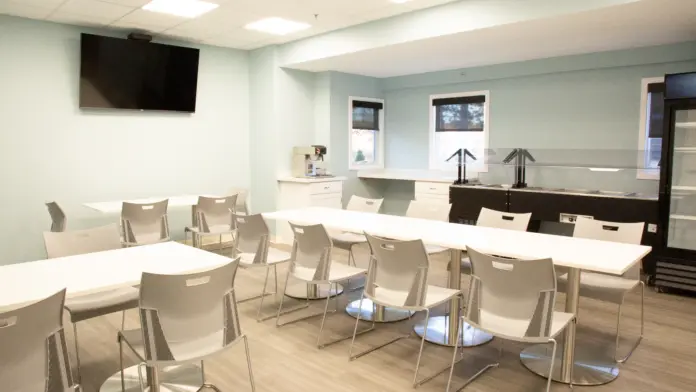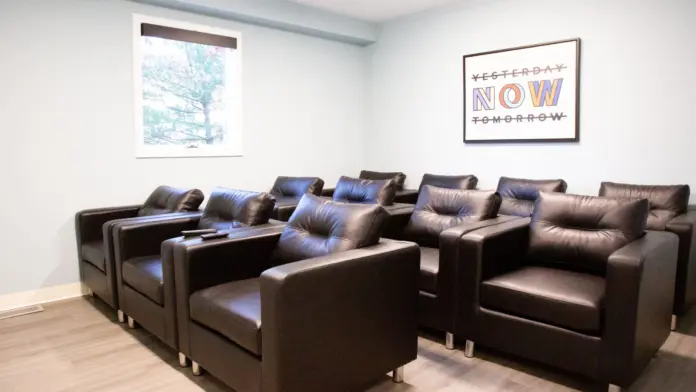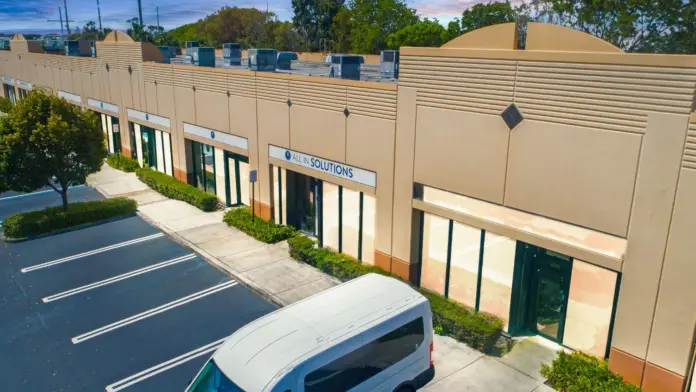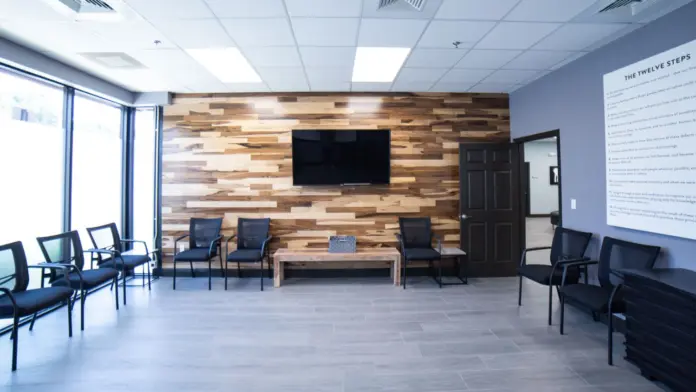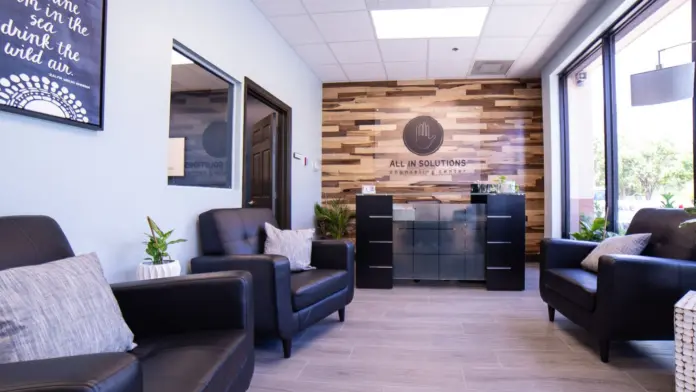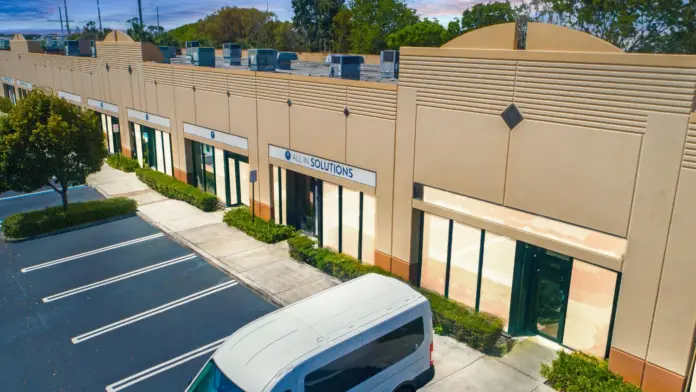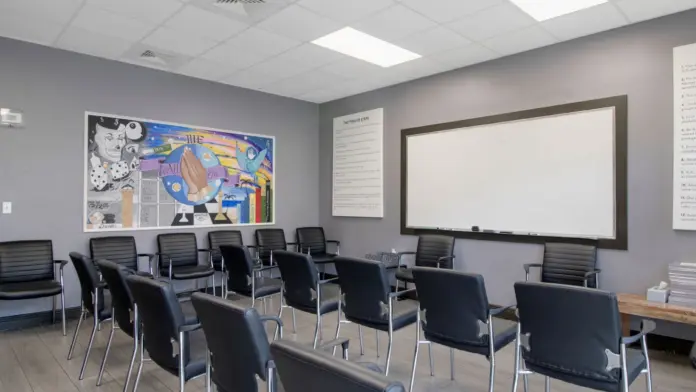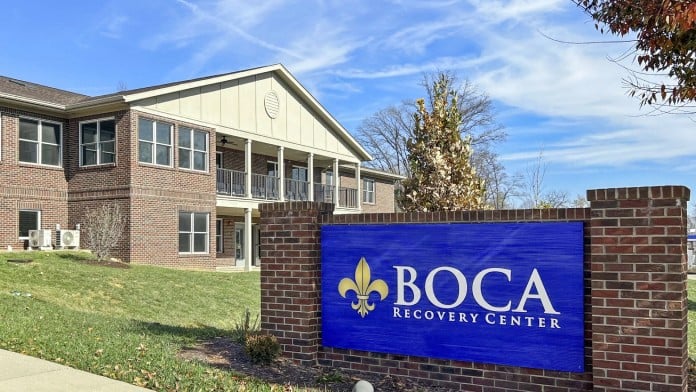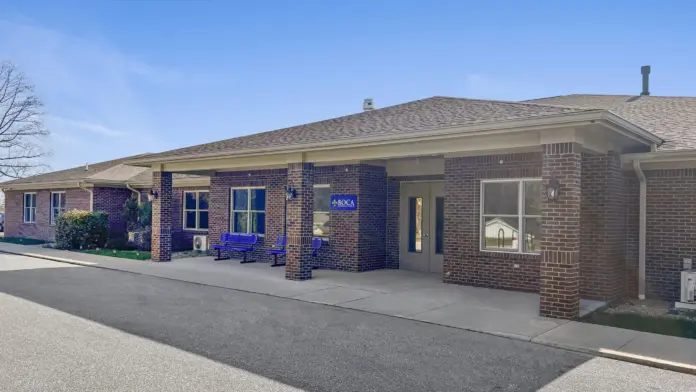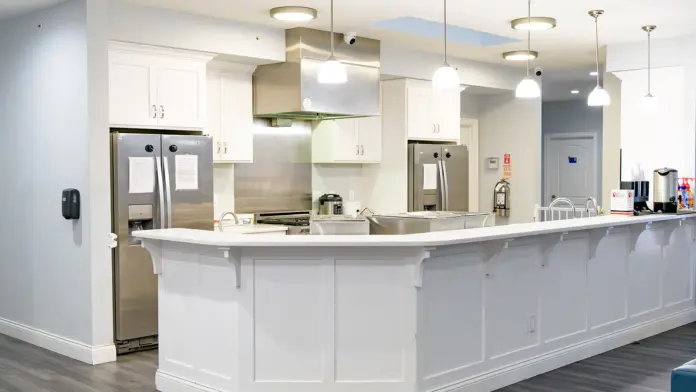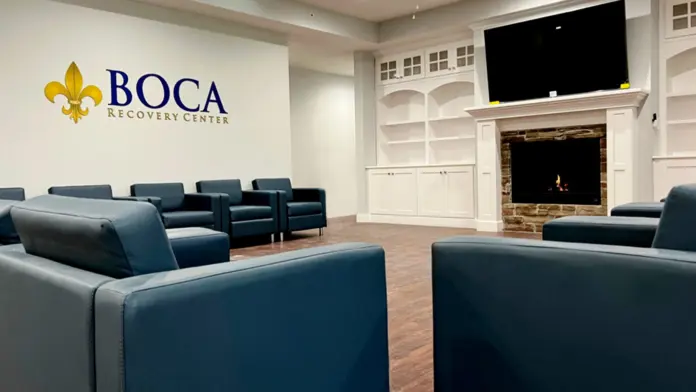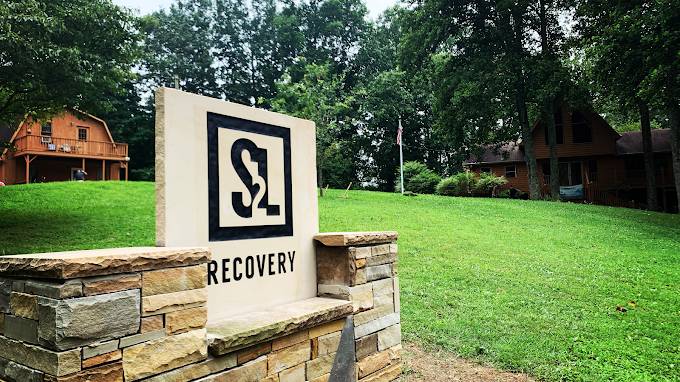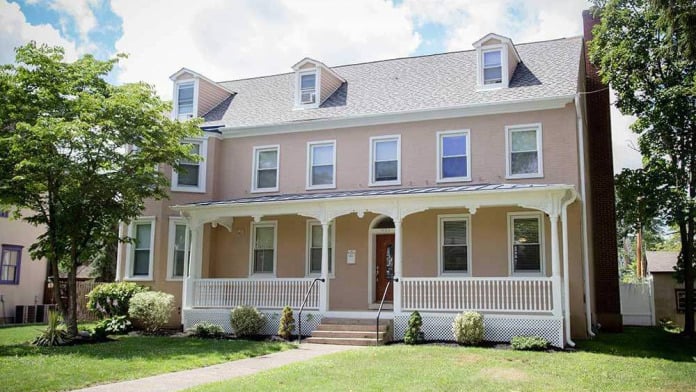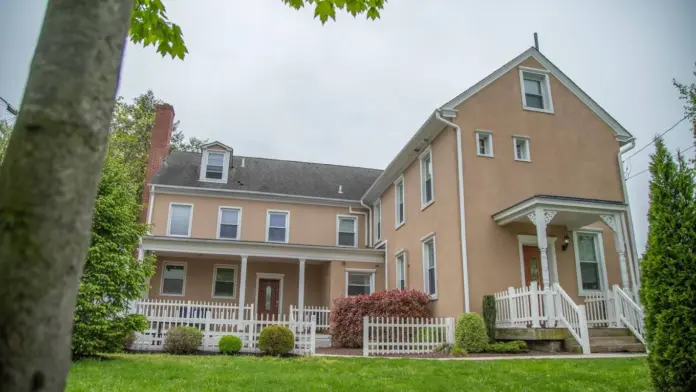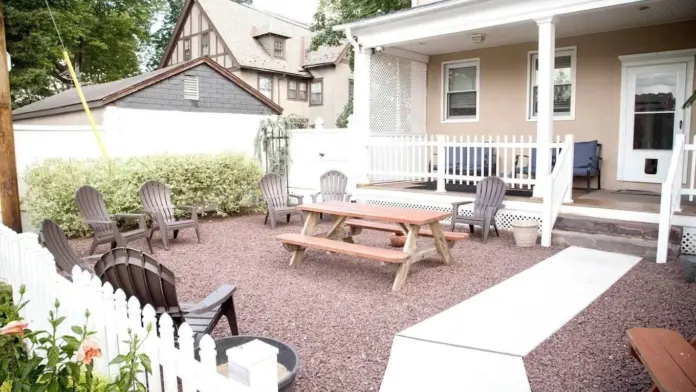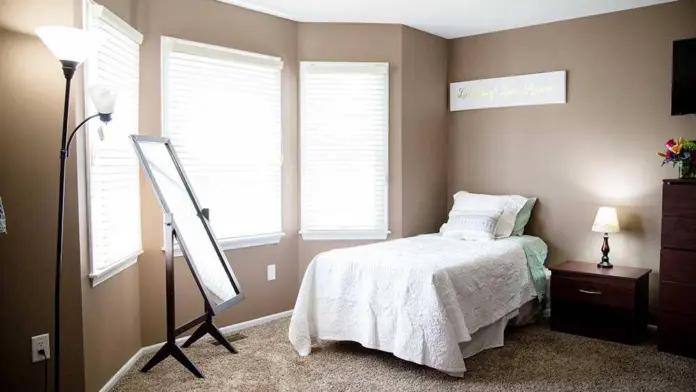
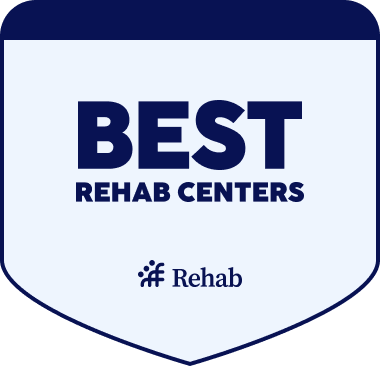
Partial Hospitalization Programs (PHPs) for Addiction Treatment
Partial hospitalization programs (PHPs) offer intensive, structured addiction treatment during the day while allowing you to return home at night—bridging the gap between inpatient rehab and standard outpatient care. Discover how partial hospitalization programs work, who they’re right for, what they cost, and how to choose a PHP that fits your life, budget, and recovery goals.
Best Partial Hospitalization Programs

When Do Partial Hospitalization Programs Make Sense for Drug Rehab?
A PHP, or partial hospitalization program, provides a viable alternative to inpatient services for individuals needing high-intensity addiction treatment. Inpatient programs are not a good fit for everyone. For some, the cost of inpatient treatment may be a barrier. For others, the on-site residency requirement would interfere with their work or home responsibilities.
This resource guide will provide you a comprehensive overview of PHP so you know where it’s the best option for you or a loved one struggling with addiction. In this article you will learn:
- Differences between PHP and inpatient or other outpatient addiction treatment programs
- Benefits and what to expect from PHP
- How to pay for PHP treatment
- How to find the best PHP program for you
Key Facts About Partial Hospitalization
- The types and scope of therapies offered in PHP are closest to those found in inpatient treatment.
- PHP programs often treat both addiction and co-occurring mental disorders.
- PHP treatment focuses on acquiring tools for sustained recovery including a personalized relapse prevention plan, improved coping skills, and the development of a support community.
- Insurance may pay for some or all PHP treatment costs.
What is a Partial Hospitalization Program (PHP) Rehab?
Partial hospitalization programs (PHP) are a type of outpatient addiction treatment for people who are struggling with substance use. In contrast to inpatient treatment, patients who are enrolled in a PHP get to return home each day, after treatment. This makes PHP an ideal option for people with home commitments.
Where does PHP fit on the ASAM Continuum?
PHPs provide high-intensity services with 24-hour medical backup. This standard of care is listed as Level 2.5 on the 5-level American Society of Addiction Medicine (ASAM) Continuum of Care for Adult Addiction Treatment chart that provides insight into the appropriate level of care needed by people with substance abuse disorders.
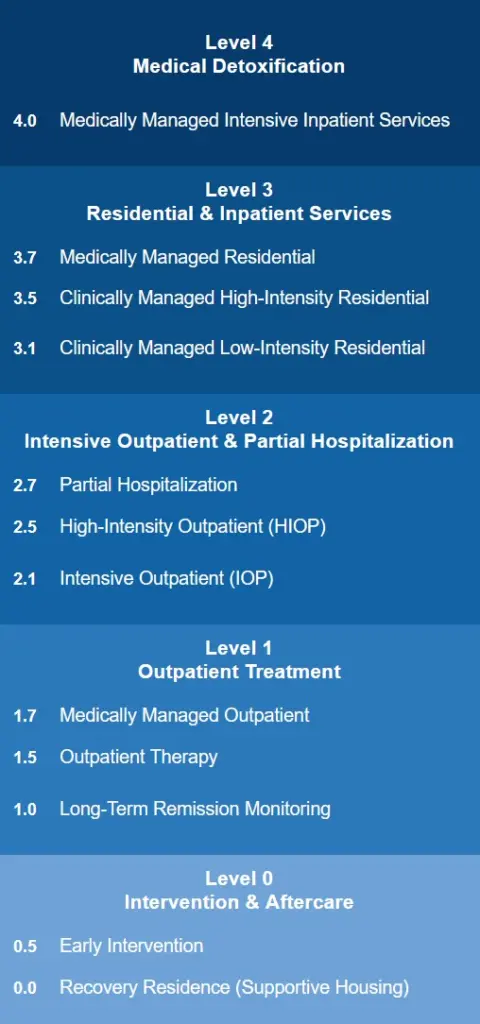
PHPs emphasize medical monitoring and structured therapies without overnight stays. Program participants spend 20 or more hours a week in treatment, most often during daytime hours.
PHP vs Inpatient Rehab
PHP programs and inpatient rehab share many similarities. Both have a diverse mix of therapies including medication management, individual and group therapies and coping skills training. Extra amenities like yoga, meditation or recreational activities are often available as well.
A partial hospitalization program does not offer 24-hour nursing services or room and board. Because clients return home each day, they are exposed to real-world triggers sooner than they would be during inpatient treatment. This requires PHP clients to immediately begin practicing the coping skills they are learning. Depending on the individual, this can be either an advantage or a disadvantage.
PHP vs. IOP (Intensity, Time Commitment, Cost)
PHPs and IOPs-–intensive outpatient programs–are both types of addiction outpatient treatment. PHPs, often used as step-down care following inpatient treatment, are more intensive and require greater time commitments than IOPs. PHPs provide 20+ hours per week of treatment; 25-35 hours over 5-7 days a week is common. IOPs typically offer about 3 hours a day of treatment over 3-4 days a week, for a total of 9-12 hours per week.
Both PHPs and IOPs offer structured therapies in individual and group sessions, using evidence-based therapies that can treat both addiction and co-occurring mental health disorders. IOPs involve roughly half the cost of PHPs, but they provide a lower level of structure and fewer options.
PHP vs. Sober Living & Peer-Support-Only Paths
Sober living homes and peer-support programs like 12-Step groups provide non-professional, non-clinical assistance to people in recovery.
Sober living homes offer affordable housing with shared accommodations, a substance-free environment, an opportunity to practice coping skills and an opportunity to receive support and companionship from peers. This makes them an ideal adjunct to clinical treatment.
Peer-support groups offer emotional support and socialization opportunities. Discussing addiction issues with people who have experienced similar circumstances reduces stigma and is often encouraging and motivating, especially during early recovery. However, there is no medical oversight, so peer-support-only options are not ideal for high-risk clients.
What Are the Components of a Partial Hospitalization Program?
While programs may differ slightly, PHPs are most like residential treatment in that you attend therapeutic programming almost every day of the week, in comparison to intensive outpatient programs that meet for several hours a day a few days a week.
A partial hospitalization program is highly structured and contains several core components, including:
- Time commitment: Typically, you can expect to attend a PHP program for at least 20 hours a week.
- Medical care: Many PHP programs simultaneously treat both substance use disorders and co-occurring mental health conditions, like depression. Studies show that treating two medical conditions that impact one another may improve overall recovery outcomes.
- Therapeutic care: PHPs offer several types of counseling including individual therapy, family counseling, couples therapy, group therapy, and mutual-aid recovery groups (like Alcoholics Anonymous or SMART Recovery). The goal of therapy is to uncover unhelpful coping strategies, gain new skills for healthier coping, develop relapse prevention strategies, and build recovery support systems.
Medication-Assisted Treatment (MAT) & Medical Monitoring
Medication assisted treatment, or MAT, is an evidenced-based therapy combining FDA approved medications with counseling to treat addiction.
Common MAT medications include buprenorphine that reduces cravings and withdrawal symptoms, naltrexone that blocks a drug’s euphoric effects and acamprosate that restores balance in brain chemicals and supports abstinence.
MAT treatment may involve regular medical checks, especially early on, to monitor vital signs, check for side effects, and adjust dosing. Lab work may be performed to track liver enzymes and to verify adherence to prescribed medications.
Individual, Group & Family Psychotherapy
Common psychotherapies used in addiction treatment include:
- Cognitive behavioral therapy (CBT) is a therapeutic approach designed to help individuals identify unhelpful thinking patterns and change them.
- Dialectical behavioral therapy (DBT) teaches emotional self-management and tolerance of emotional distress.
- Motivational Interviewing (MI) focuses on getting clients to recognize and strengthen their motivation for change.
- Contingency Management (CM) is an approach that uses rewards to help reinforce positive behaviors.
CBT and DBT sessions involve skills training on cognitive restructuring and emotional regulation. Contingency management provides vouchers for items like food or movie tickets as rewards.
Psychoeducation, Life-Skills & Vocational Support
Psychoeducation can reduce the risk of relapse. Teaching individuals practical, daily life skills such as coping strategies, communication skills and how to develop healthy routines, improves their chances for securing employment and building a stable life. These influences lower the likelihood of relapse.
Psychoeducation curriculum focuses on the science of addiction and teaching skills like budgeting and building a resume. Sometimes GED prep or liaison services with employers are included as well.
Holistic & Adjunctive Options (Mindfulness, Adventure, Art Therapy)
Adjunctive and supplemental therapies often available in PHP programs include options like:
- Yoga, guided meditations, and mindfulness practice to reduce autonomic nervous system arousal and encourage relaxation
- Art or music therapy to facilitate emotional awareness
- Experiential outings such as hiking or biking to foster self mastery and provide sober fun.
What Are the Core Benefits of a Partial Hospitalization Program?
There are several benefits to attending a partial hospitalization rehab program, including:
- Cost effectiveness: PHPs are often more cost-effective and affordable compared to residential addiction treatment because you are not paying for overnight stays, or 24/7 medical care.
- Flexibility: Day treatment programs offer structured addiction treatment with the flexibility and freedom to live at home and fulfill work, school or family obligations. Many PHPs offer programs in the evenings, weekends or during the day to fit around your schedule.
- Good transitional options: PHPs can ease the transition from inpatient rehab to outpatient rehab while reducing the risk of relapse.
- Recovery and therapeutic supports: Day treatment provides consistent access to peer support as well as individual and family counseling that can help sustain recovery. Therapies might include cognitive behavioral therapy, motivational interviewing, contingency management or dialectical behavioral therapy.
- Autonomy and accountability: Attending a PHP and returning home at night promotes a sense of independence and promotes personal accountability, which helps sustain long-term recovery.
- Recovery community: An essential part of long term recovery and sustained positive behavioral change is a recovery community.PHPs help you to develop relationships through mutual-aid meetings, like AA, or by developing friendships with others in recovery.
What to Expect in a Partial Hospitalization Program
The PHP setting may be a hospital or a residential rehab facility that runs day treatment programs. PHP treatment involves attending treatment for a large portion of the day, usually for 5-7 days a week and then returning home at night.
Partial hospitalization programs are often as intensive as residential programs in terms of the treatment components, and they require a similar time commitment. The primary difference is that with PHP you get to sleep in your own bed at night. It can be challenging to determine whether PHP is the right program for you or your loved one.
The American Society of Addiction Medicine suggests considering the following factors before making a decision:
- The severity of substance use disorder
- Risk of relapse
- If there is a supportive family and home environment
- Good physical health
- Readiness to change
- Emotional or behavioral issues that would benefit from psychological therapy
The main goals of PHP treatment are to support individuals with substance use disorder in achieving and sustaining recovery, developing a relapse prevention plan, enhancing coping strategies and developing a recovery support community.
Daily Structure: A “Day-in-the-Life” of PHP
A typical PHP schedule may include:
- 8- 9 am: Morning check in; vital signs recorded
- 9-10 am: Group session; discussion of practical coping strategies
- 10 am – 12 noon: Psychoeducation groups to learn new tools for relapse prevention
- 12 noon – 1 pm: Lunch
- 1pm – 2 pm: Process group; share personal challenges
- 2-3 pm: Skills building exercises with group practice
- 3-4 pm: Recreational activity, yoga or other class
- 5-6 pm: Dinner
- 6-7 pm: 12-Step meeting
- Evening: Homework; Journaling
Other General Expectations
Multidisciplinary Treatment Team Roles:
- Addictionologist provides evaluation, diagnosis, treatment planning and treatment services.
- RN provides medication management and patient education; also manages physical symptoms.
- Licensed Therapist treats both substance abuse and mental health disorders.
- Case Manager supports clients in navigating care plans and links clients to resources.
- Peer Recovery Coach uses their own lived experience to support clients and assist them in accessing needed resources.
Patient Responsibilities & Recovery Assignments
Patients are expected to attend greater than 90% of their PHP sessions.
Patients will also be expected to submit random drug screens and complete workbook tasks.
How Much Does PHP Rehab Cost?
PHP programs will vary in cost depending on the type of program and other variables. Without insurance, the average cost of PHP rehabs are:
$250 to $500
A PHP program is approximately $250 to $500 per day.
$7,500 to $15,000
A PHP program is approximately $7,500 to $15,000 per month.
Residential treatment is costlier than PHP, averaging between $10,000 and $50,000 per month, depending on the intensity of medical care and/or amenities. General outpatient treatment costs about $2,000 per month.
Paying for PHP
Variables affecting PHP program costs are:
- Insurance coverage: With private insurance, the cost of PHP treatment may be reduced by 80%. Depending on your plan, PHP might be considered an in-network service and therefore would be less expensive than out-of-network programs. Deductibles can also factor into the cost.
- Length of treatment: Some programs last 30 days; others may last up to 90 days depending on the type of program you choose.
- Services offered: Luxury rehabs with amenities like spas, acupuncture, massage and gourmet meals are usually more expensive than PHPs located in community clinics. But it’s also worth exploring the benefit of these additional services because they can make your rehab experience more enjoyable.
- Location: As with most goods and services, location impacts price. Luxury programs in California are often more expensive than similar programs in Minnesota, for example.
If addiction treatment coverage is not included in your insurance plan, you may have to pay out of pocket. However, many treatment centers offer payment plans, financing, and even scholarships to make treatment more affordable.
Is a PHP Addiction Treatment Program Right for You?
PHPs are beneficial for many people, even those with co-occurring disorders.
Broadly speaking, the most suitable candidates for a PHP include those who:
- Use drugs or alcohol daily, but do not have a physical dependence that requires detox.
- Have been diagnosed with a co-occurring disorder.
- Currently live in a stable, safe, supportive living environment
- Are unable to commit to inpatient rehab due to work, school, or child-care obligations.
- Need an affordable treatment alternative to inpatient rehab.
- Are in reasonably good physical health.
- Don’t need 24-hour medical care.
- Have transportation or can access public transportation to travel to and from PHP.
- Can practice the skills they learn in the PHP at home with relative ease.
- Usually attend follow up appointments when required.
- Are motivated to change and willing to engage in a program of recovery.
- Are PHPs Suitable for Everyone?
Unfortunately, PHPs may not be suitable for individuals with:
- Acute substance use disorder.
- Substance dependence that increases the risk of withdrawal symptoms when the drug use is stopped.
- Physical conditions that may need 24/7 medical care during addiction treatment.
- No at-home support or a triggering living environment
How to Choose the Right Partial Hospitalization Program
There are several factors to consider when choosing a partial hospitalization program. Not all programs are created equal, and everyone has different support and needs.
Some important factors to consider are:
- Do they accept your insurance? And is your plan in-network or out-of-network?
- What amenities does the facility have? (Would you be more comfortable in a luxury facility with upscale accommodations, or is a medical office setting okay?)
- Is there a waiting list for the program? If so, how long are you prepared to wait? If you do wait, will your addiction worsen – will you need to go to residential treatment?
- Do you need a specialized program for co-occurring disorders?
- Does the facility have medical staff and training in supporting medical needs if necessary?
- What are the credentials of the therapists? Are they masters-level clinicians?
- What kind of reviews has the facility and program gained online?
- Will the program fit into your lifestyle, and are there programs with times that work around your commitments?
- How far is the program from your home, and do you have time to commute and make your other commitments?
- How does this program differ from other programs? Do they have any special features or additions to the program that might make you favor them over other programs?
- Is the program 12-step based or evidence-based? Does that matter to you and how you may sustain your recovery?
- What are the other requirements of the program? Are you expected to attend sessions on completion of the program, or visit your PCP regularly?
- Is the facility disability friendly and can it accommodate your needs?
- Do you want a facility that is affirming for your gender, sexual orientation, or religion?
- What kind of aftercare is available when you complete the program? Does the PHP include a comprehensive relapse prevention plan?
Life After PHP: Continuing Care & Relapse Prevention
Recovery from addiction does not end when a PHP program ends. The need for ongoing support remains as you transition from PHP treatment to everyday life.
Next steps that facilitate a gradual and effective step-down in treatment intensity include:
Step-Down to IOP, Outpatient & Sober Living
Transitioning to a less intensive IOP program following PHP treatment helps bridge the gap between highly structured support and more independent living.
Ideally, as part of your PHP aftercare plan you should schedule your first IOP session prior to discharge from PHP, so that there is no lapse in treatment. After IOP, regular outpatient treatment can be another step-down to allow you to gradually re-integrate into your work and home life with new sober lifestyle tools.
For many, transitioning to sober home living helps to maintain therapeutic continuity by providing a drug-free, supportive environment. Peer-to-peer companionship and shared household roles and responsibilities encourage personal accountability. Participating in 12-Step meetings with house mates can strengthen one’s commitment to sobriety, especially in early recovery.
Relapse-Prevention Planning & Recovery Capital
Relapse prevention planning is a key component of a successful aftercare plan. Build recovery capital, internal and external resources that you can use to sustain recovery. This could be new coping skills, a support system, community resources, and necessities like a job, housing, and transportation. Know your relapse triggers and have emergency contacts available.
Alumni Programs, Peer Support & Family Involvement
As part of your aftercare plan, attend alumni meetings, stay in touch with a peer coach or sponsor in-person or by phone, and keep regular contact with family for at least six months.
Frequently Asked Questions About PHP
On average, PHP lasts about 4-6 weeks. Program length can be adjusted to assure successful attainment of clinical milestones. Factors such as the severity of addiction and the presence of co-occurring disorders can extend the time spent in a PHP program.
PHPs try to accommodate work or school attendance schedules. Sessions typically run from 9 am till 3 pm, which allows for evening classes or afternoon shift work. But some PHPs have more flexible schedules and offer evening or weekend sessions.
PHP employs a non-punitive approach. If you should relapse, you should immediately contact your treatment team. They will perform a clinical review and may possibly refer you to detox. Upon returning to regular PHP programming, you will be provided intensified therapy and other adjustments to your care plan, as needed.
Many PHP programs provide shuttle service to the program location within a 15-mile radius. Shuttle riders are picked up and returned to their homes. If you need to use public transportation, public-transit stipends are commonly offered.
An on-site psychiatric evaluation identifies co-occurring disorders and related needs. Treatment is provided for both substance abuse issues and co-occurring disorders simultaneously. Medication management and specialized integrated group therapy topics, such as trauma-informed care, are provided as appropriate.
Find Treatment Near You
Visit Rehab.com to find PHP treatment centers near you. Search by location, level of care, insurance or specialized program. Top-ranked centers in your city or state can be easily found using our rehab scoring methodology.
Not sure where to start? Call the number below to discuss your treatment options and verify your insurance.
Call A Treatment Provider
For a conversation about what treatment options are available to you.
Make a Call
Addiction Centers Nearby Partial Hospitalization Programs
Finding facilities near you…

